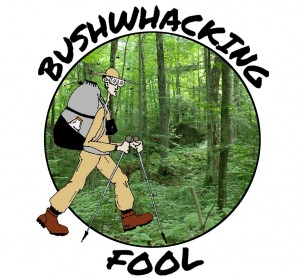
Tuolumne Meadows
During the summer of 2009, two friends and I journeyed west to Yosemite National Park to spend five days hiking along the John Muir Trail. The second day of our trip was spent acclimating to the higher elevations and exploring Yosemite National Park. This was the only day spent entirely within the park and included climbing Lembert Dome, visiting Tenaya Lake, hiking to Tuolumne Grove and driving through Yosemite Valley. The following post chronicles the first of three parts of the second day of the trip. The early morning was spent exploring Tuolumne Meadows and trying to secure the proper wilderness permit for our hike to start on the next day.
After spending the previous day traveling from Syracuse, the only day spent entirely within Yosemite National Park started just after dawn in Tuolumne Meadows Campground. Other than a few other people starting the day early, and an occasional unidentified bird vocalizing it was fairly quiet. I tossed and turned in my sleeping bag but a slight headache kept me from falling back to sleep so I crawled out from under my tarp to meet the new day.
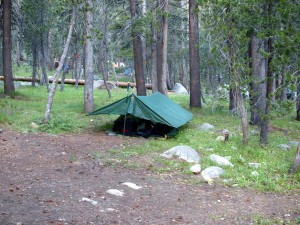
Tarp at campsite in Tuolumne Meadows Campground
There was no noise coming from Dave’s tent so I grabbed my camera and binoculars
and headed down the road to explore the campground a little. As I walked down the road I was fascinated by the coniferous trees growing within the campground. I castigated myself for not studying the tree species found in this part of the country before I left Syracuse. It had been over a decade since I took Dendrology and studied the trees of the west but I would have to wing it and do the best I could now that I was here.
Buy the super-small Leica Ultravid 8×20 binoculars.
As I walked down the road I heard a few different bird vocalizations. Although I could make a decent guess as to the type of bird making these sounds (e.g. warblers, jays, chickadees, etc.) I could not identify the any of the actual species. This lack of knowledge would irritate me even more than the lack of tree species identification skills.
When I started to move out of the densely packed camping area I noticed the lack of understory under the pine trees dominating the forest canopy. Other than the occasional shrub or small tree there was just a thin cover of grass on what appeared to be a thin, sandy soil. In my usual romping grounds of the Adirondacks an area with so little understory would be rare indeed.
After reaching a parking lot with half a dozen bear lockers and some restrooms I turned around and headed back toward our campsite. Soon after starting back I saw a small bird flutter down to the ground flashing white feathers at the border of its tail. I knew immediately it was an Oregon junco, a subspecies of the dark-eyed junco. This junco bounced around on the ground obviously in search of its breakfast. This subspecies of junco with its blackish hood and rufous-brown back and sides has a whole different look than the typical Dark-eyed Junco of the northeastern United States.
Buy a copy of A Field Guide to Western Birds.
As I approached our campsite a young mule deer made an attempt to cross the road in front of me. I stopped and stood still to let the deer cross but it did not really seem to mind my presence. After crossing the road it weaved its way through the maze of campsites without any hesitation. Perhaps it was in search of an early morning handout.
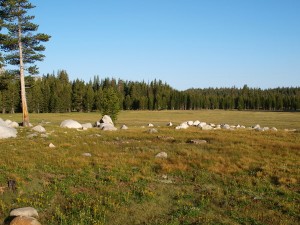
Tuolumne Meadow
Soon upon returning to the campsite, Dave emerged from his tent and we went about planning the day. Since Jim would not return with the car until the afternoon we had plenty of time to explore the area around Tuolumne Meadows. The only definite chore on our itinerary was to obtain a wilderness pass for our trip at the John Muir Trail on.
Since the Wilderness Center did not open for a while we decided to go and explore around the meadows. We packed our daypacks for the day and headed down the road toward Tuolumne Meadows.
The early morning light shone on the meadows endowing it with a golden hue. An occasional giant tree broke up the golden color with a swath of shadow. Already people were scattered about on the meadows at this early morning. We left the road and headed north onto the meadow, the outside of our boots becoming instantly saturated from the morning dew.
Asolo TPS 520 hiking boots are perfect for bushwhacking.
We meandered our way through the meadow enjoying the view. After cutting across the meadow we followed a herd path through the forest for a short distance down to the Tuolumne River. The river was fairly shallow here as it rushed through the many half-submerged rocks as it flowed out into the meadow.
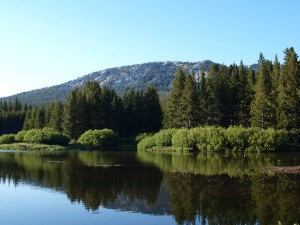
Tuolumne River
We soon returned to the Tioga Road and headed east toward the Wilderness Center. We stayed on the road briefly before moving onto a trail located to the south between the road and the river. There was an abundance of bird activity here along the Tuolumne River, most of which were sparrows, warblers and vireos as far as I could tell. Again, I cursed not studying up on western plants and animals before leaving Syracuse.
When we arrived at the Wilderness Center there was already a line of people waiting to obtain a wilderness permit. Wilderness permits are issued for trailheads to avoid the impact of too many people concentrated in too small of an area.
When we finally made it to the front desk we found out that there were no more permits available for the John Muir Trail at Tuolumne Meadows through Lyell Canyon. This threw our original plan into a state of disarray requiring Dave to think on his feet since I knew little about the area.
The Complete Guidebook to Yosemite National Park will help plan your visit.
The ranger suggested using the Mono Pass trailhead up the road east of Tuolumne Meadows. Dave was not familiar with the trail and continually tried to finagle the ranger into letting us use the Meadows trailhead. When the ranger suggested hiking up the Mono Pass trail to Spillway Lake and then bushwhack over to the John Muir Trail I became suddenly interested! That was a bushwhack of about 5 miles. Now I started paying attention to the planning!
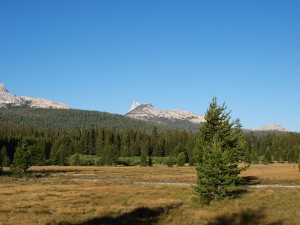
Tuolumne Meadow
I lobbied hard for the bushwhack option but Dave was having none of it despite the ranger’s assurance that the going would not be too difficult. After some indecision we finally decided to get a permit for the Mono Pass Trailhead and hike this trail through Parker Pass and Gem Pass to meet up with the John Muir Trail at Thousand Island Lake.
This new plan required hiking over 10 miles through two passes and climbing to almost 13 thousand feet all in the
first day. It was a good thing I did not pay too much attention to our plans or I might have been more concerned.
As it turned out, this change in plans would make our trip a more memorable experience than any of us anticipated.
